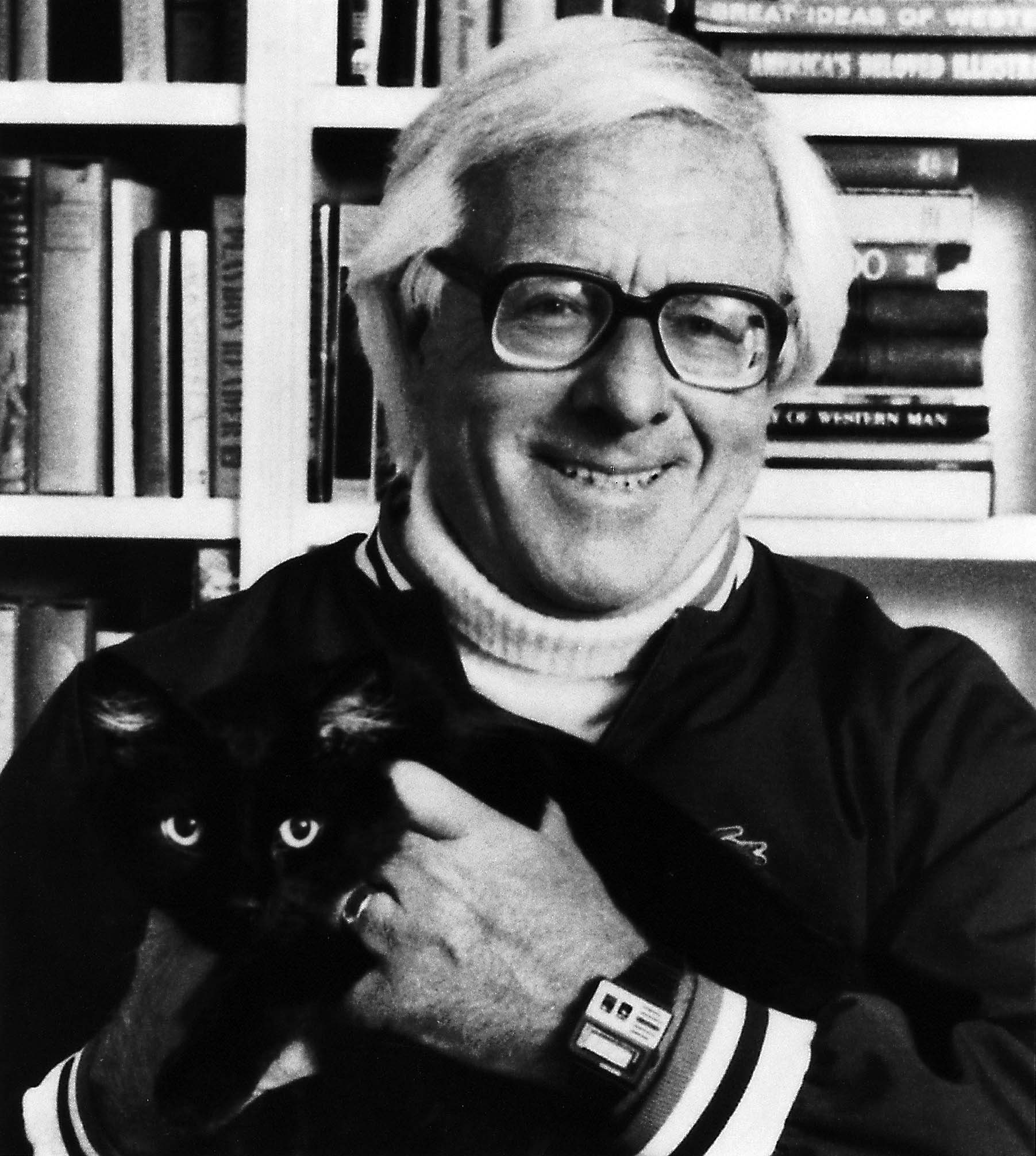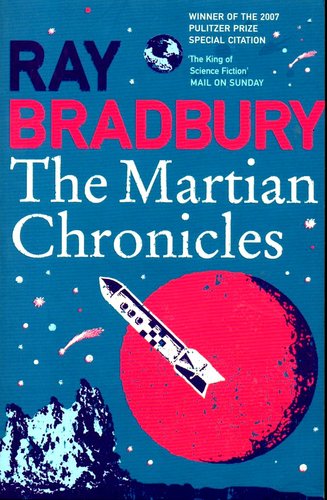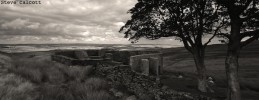
photo by Kevin Tuck
by Jennie Ryan
From his obituaries alone, it’s easy to see that Ray Bradbury influenced an eclectic and widespread circle of writers, scientists, actors, politicians, astronauts, thinkers and devoted fans. He died on 05 June 2012, aged 91, after spending the greater part of his adult life pursuing his personal creed:
‘Love what you do and do what you love. Don’t listen to anyone else who tells you not to do it. You do what you want, what you love. Imagination should be the center of your life.’
Bradbury was born in Waukegan, Illinois, a small town located on the western shore of Lake Michigan. His hometown has honoured him in numerous ways, including the Annual Ray Bradbury Creative Contest and the Ray Bradbury Storytelling Festival. Ray Bradbury Park includes the ravine that was so central to his tales in Dandelion Wine, and the Green Town Tavern is an homage to fictitious Green Town – the literary doppelganger he created of Waukegan in a trilogy of his novels.
Bradbury’s love of books started as a young boy, when he spent countless hours slipping into other worlds at the public library in Waukegan. He walked on Mars with John Carter, explored the depths of the oceans with Captain Nemo, and immersed himself in Edgar Allan Poe’s thrilling horrors. His creativity was also moulded by comics and the sensational radio dramas of the early 30s. At the age of twelve, he was writing and illustrating his own ‘Sunday panels’, portraying exotic adventures in South America or Africa, and he later took on the job of reading stories for children on a local Tucson radio station.
 At the age of thirteen, Bradbury moved to Los Angeles. He graduated from Los Angeles High School in 1938, but, in an economically depressed America, he could not afford to go to college. Instead, he pursued a free education in the local library, studying for three days a week for ten years. It was at this time that his passion for science fiction writing began to emerge. Joining writers such as Robert A. Heinlein and Leigh Brackett, he became a member of the Los Angeles chapter of the Science Fiction League, and in the same year he published his first short story, ‘Hollerbochen’s Dilemma’, in Forrest J. Ackerman’s fanzine, Imagination!
At the age of thirteen, Bradbury moved to Los Angeles. He graduated from Los Angeles High School in 1938, but, in an economically depressed America, he could not afford to go to college. Instead, he pursued a free education in the local library, studying for three days a week for ten years. It was at this time that his passion for science fiction writing began to emerge. Joining writers such as Robert A. Heinlein and Leigh Brackett, he became a member of the Los Angeles chapter of the Science Fiction League, and in the same year he published his first short story, ‘Hollerbochen’s Dilemma’, in Forrest J. Ackerman’s fanzine, Imagination!
Over the next decade, Bradbury continued contributing to many of the popular ‘pulp’ magazines, such as Super Science Stories, Weird Tales and Astounding Science Fiction. He also started submitting to some of the more literary publications, including Harpers, Saturday Evening Post and The New Yorker.
In 1946, a young editor at Mademoiselle, George Davis, selected Bradbury’s unsolicited short story ‘Homecoming’ for publication in the magazine. It went on to be acknowledged as one of the best American short stories of the year, and received an O. Henry Award. No doubt encouraged by this accolade, Bradbury continued to pursue a career as a professional writer and published his first book soon after, in 1947 – a collection of short stories titled Dark Carnival.
1947 also marked an important milestone in Bradbury’s personal life, as he married Marguerite ‘Maggie’ McClure. The couple met when Maggie suspected him of stealing from the bookstore where she worked. Fowler Brothers Bookstore had been the target of recent thefts and when Bradbury entered the store on a hot afternoon wearing a trench coat she was immediately suspicious. Of course, her concerns were soon allayed. Throughout their fifty-six years of marriage, Maggie supported Bradbury’s writing, even taking on the role of chief bread-winner in the early years, to allow him to write uninterrupted. It was only on becoming pregnant with their first child, in 1949, that Maggie passed the family earning reins to Bradbury, who quickly responded by selling draft outlines of two of his most famous manuscripts, The Martian Chronicles and The Illustrated Man.
Bradbury’s writing successes soared in the 1950s. A succession of novels and short story collections were published across the decade, including The Golden Apples of the Sun (1953), Farenheit 451 (1953), The October Country (1955) and Dandelion Wine (1957).
 The Martian Chronicles was published as a novel, but is comprised of a series of short stories that chronicle man’s attempt to colonise Mars. It is now recognised as an example of both classic science fiction and social criticism; the stories reflecting the anxieties faced by many Americans as they confronted their combined fears of nuclear war and the Cold War threat of foreign political powers. The tales also touched on America’s growing desire to return to a simpler and safer era.
The Martian Chronicles was published as a novel, but is comprised of a series of short stories that chronicle man’s attempt to colonise Mars. It is now recognised as an example of both classic science fiction and social criticism; the stories reflecting the anxieties faced by many Americans as they confronted their combined fears of nuclear war and the Cold War threat of foreign political powers. The tales also touched on America’s growing desire to return to a simpler and safer era.
Bradbury’s most famous novel, Farenheit 451, is also a precautionary tale, telling of a future where books are burned, not due to government censorship but as a result of new technology. Although he expressed concerns over the growing dominance of television, Bradbury gained a new legion of fans through his televised work. He wrote and presented sixty-five episodes of ‘The Ray Bradbury Theatre’, his scripts were used for episodes of The Twighlight Zone, and he even won an Emmy Award in 1993 for his animated TV movie ‘The Halloween Tree’, based on his 1972 short story of the same name.
Bradbury’s accomplishments, as a wide-ranging writer, are well recognised, and his influence on the broader cultural and scientific landscape of modern America is clear to see. The Apollo 15 astronauts named an impact crater on the moon ‘Dandelion Crater’, in honour of Dandelion Wine, and the 2012 NASA Curiosity rover landing site on Mars was named the ‘Bradbury Landing’. In 2002, Bradbury was given a star on the Hollywood Walk of Fame, at 6644 Hollywood Blvd, one of only two authors to receive this honour. And in 2007, he received a special citation from The Pulitzer Board:
“…for his distinguished, prolific, and deeply influential career as an unmatched author of science fiction and fantasy.”
The anthology Shadow Show was published in 2012, full of stories inspired by Bradbury’s works. The stories come from acclaimed authors such as Harlan Ellison, Neil Gaiman, Margaret Attwood, Mort Castle and Sam Weller. It was created to celebrate Bradbury’s literary spirit and enduring legacy. After all, as Neil Gaiman wrote: ‘the landscape of the world we live in would have been diminished if we had not had him in our world.’

